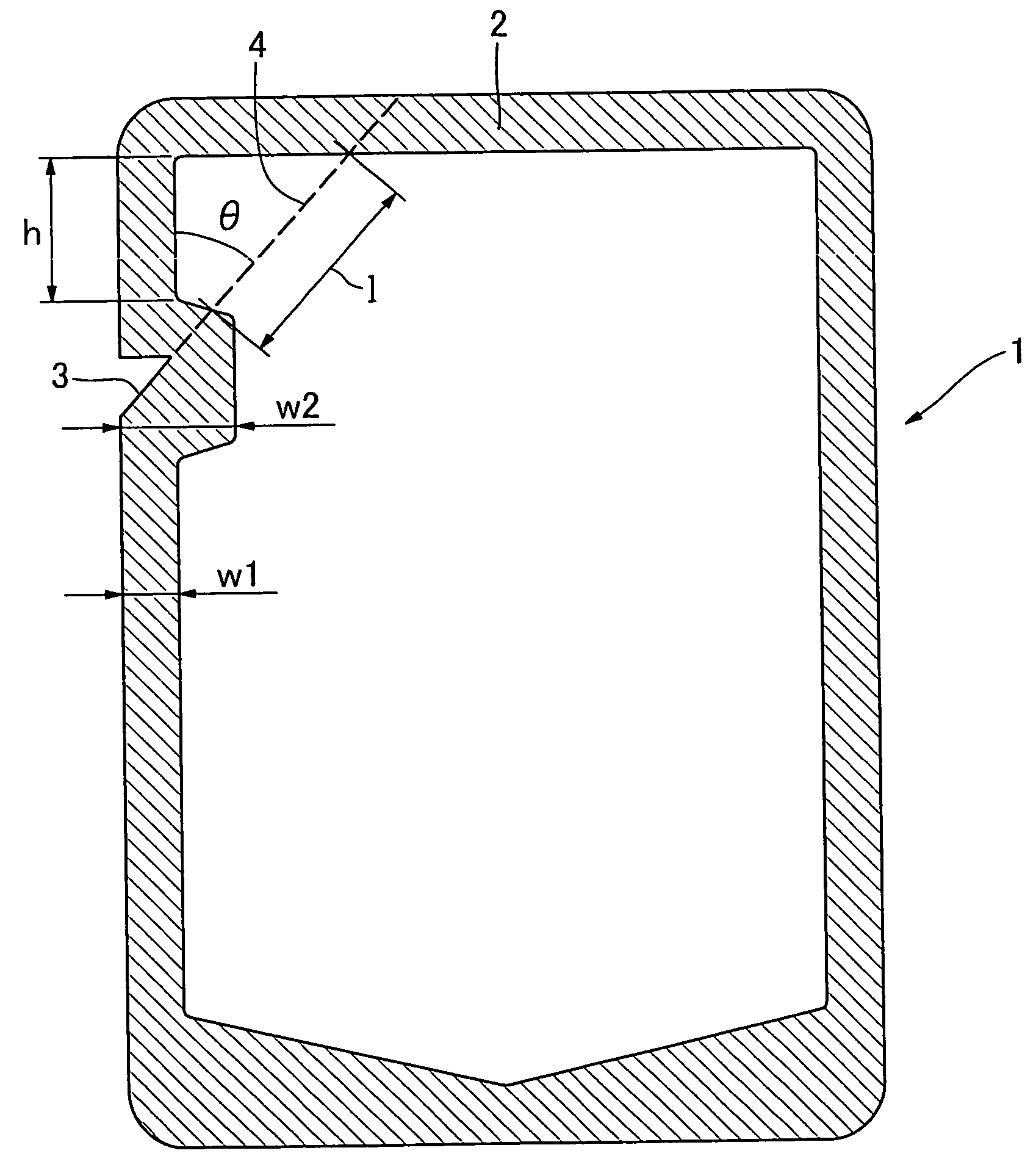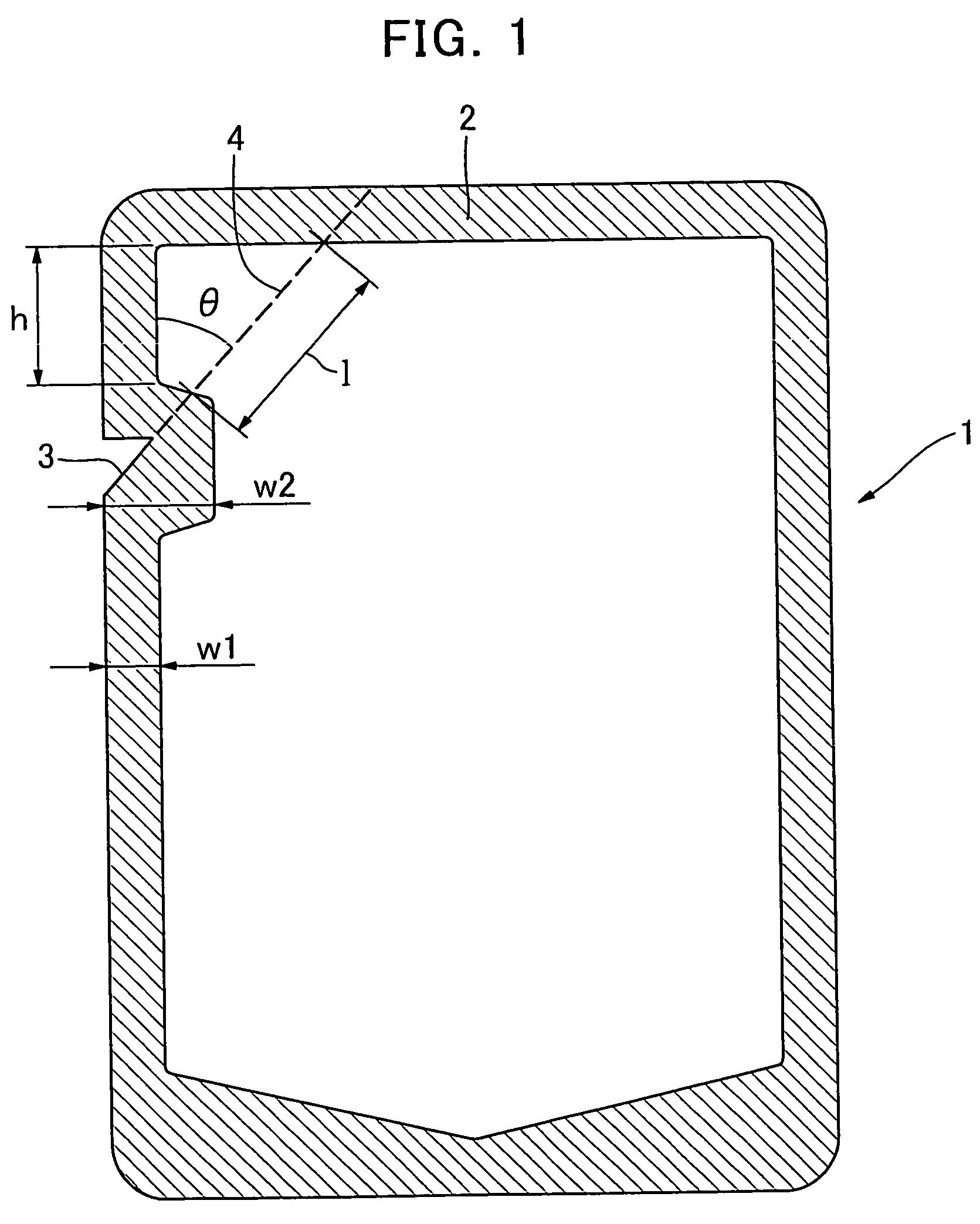Retort pouches
- Summary
- Abstract
- Description
- Claims
- Application Information
AI Technical Summary
Benefits of technology
Problems solved by technology
Method used
Image
Examples
example 1
[0035] An oriented nylon film and a polyester film were laminated by dry-laminating on a four layer film produced by the method described in Japanese Patent Publication (JP Kokoku) No. Hei 1-54191, that is, an aluminum foil / a maleic anhydride modified polypropylene resin layer / an unmodified polypropylene resin layer / an ethylene propylene block copolymer in order to produce a metal laminated film consisting of a polyester film (thickness: 12 μm) / an urethane heat-hardening adhesive layer / an oriented nylon film (thickness: 15 μm) / an urethane heat-hardening adhesive layer / an aluminum foil (thickness: 7 μm) / a maleic anhydride modified polypropylene resin layer (thickness: 3 μm) / an unmodified polypropylene resin layer (thickness: 12 μm) / an ethylene propylene block copolymer (thickness: 60 μm). This metal laminated film was heat-sealed by its edges so that the ethylene propylene block copolymer became inside to produce a standing retort pouch 1 of FIG. 1. FIG. 1 shows a front view of the p...
example 2
[0036] Using a metal laminated film laminated by dry-laminating, consisting of a polyester film (thickness: 12 μm) / an urethane heat-hardening adhesive layer / an oriented nylon film (thickness: 15 μm) / an urethane heat-hardening adhesive layer / an aluminum foil (thickness: 7 μm) / an urethane heat-hardening adhesive layer / an ethylene propylene block copolymer (thickness: 60 μm), the film was heat-sealed by its edges so that the ethylene propylene block copolymer became inside to produce Samples 4, 5 and 6, each of which had the same shape of the cutout (the notch) 3 for opening as that of Samples 1, 2 and 3, respectively.
example 3
Sensory Evaluation
[0037] The sensory evaluation was conducted (5 panelists) on ease of obliquely opening and pouring ability into a cup using the standing retort pouches produced by Examples 1 and 2. The index of the ease of obliquely opening was based on extremely hard to open (−2), usual (0), and extremely easy to open (2). The index of the pouring ability into a cup was based on extremely hard to pour (−2), usual (0), and extremely easy to pour (2). Each were evaluated by 5 scale evaluation (−2, −1, 0, 1, 2).
[0038] The ease of obliquely opening of Sample 1 (0.7), Sample 2 (0.4) and Sample 3 (0.8) in Example 1 were better than that of Sample 4 (−1.6), Sample 5 (−1.5) and Sample 6 (−1.8) in Example 2.
[0039] The pouring ability into a cup of Sample 1 (0.7), Sample 2 (0.3) and Sample 3 (0.9) in Example 1 were better than that of Sample 4 (−0.6), Sample 5 (−0.4) and Sample 6 (−0.6) in Example 2. As a result of measuring the width of the opening of Samples 3 and 6, each averages (n=...
PUM
| Property | Measurement | Unit |
|---|---|---|
| Length | aaaaa | aaaaa |
| Thickness | aaaaa | aaaaa |
| Thickness | aaaaa | aaaaa |
Abstract
Description
Claims
Application Information
 Login to View More
Login to View More - R&D
- Intellectual Property
- Life Sciences
- Materials
- Tech Scout
- Unparalleled Data Quality
- Higher Quality Content
- 60% Fewer Hallucinations
Browse by: Latest US Patents, China's latest patents, Technical Efficacy Thesaurus, Application Domain, Technology Topic, Popular Technical Reports.
© 2025 PatSnap. All rights reserved.Legal|Privacy policy|Modern Slavery Act Transparency Statement|Sitemap|About US| Contact US: help@patsnap.com



